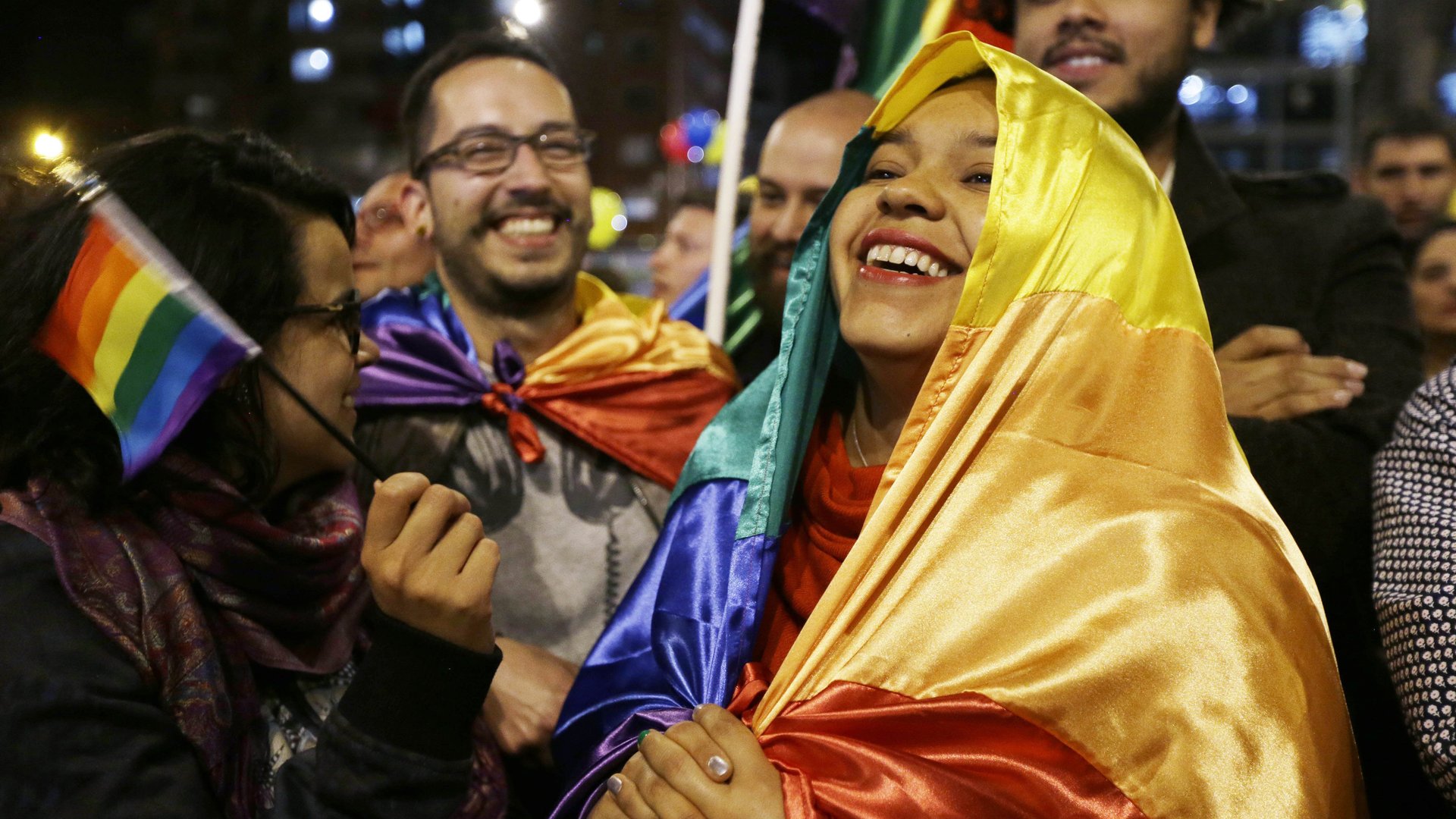Colombian women made sure gender equality was at the center of a groundbreaking peace deal with the FARC
The Colombian government and the FARC, the country’s largest guerrilla group, signed a peace agreement to end their 50-plus-year war last week. The deal settles the main issues over which the two parties had been killing themselves and some 180,000 civilians (link in Spanish) over the course of several decades: agrarian reform, political power, and drug trafficking. It’s a remarkable achievement considering the length and scale of the conflict.


The Colombian government and the FARC, the country’s largest guerrilla group, signed a peace agreement to end their 50-plus-year war last week. The deal settles the main issues over which the two parties had been killing themselves and some 180,000 civilians (link in Spanish) over the course of several decades: agrarian reform, political power, and drug trafficking. It’s a remarkable achievement considering the length and scale of the conflict.
But the 300-page deal (Spanish) is also unique in its attempts to achieve gender equality, acknowledging the injustices inflicted upon women during the conflict, and laying out how they will be righted.
The deal now goes to a national vote in October, a necessary requirement for the accord’s implementation. If approved, it will be the most feminist development ever to occur in Colombia, says Catalina Ruiz-Navarro, a Colombian journalist. “If even half of it is implemented, the lives of Colombian women will be changed overwhelmingly,” she adds.
The deal is already groundbreaking by simply including women’s perspectives, which are rarely considered in peace negotiations, says Kristian Herbolzheimer, Colombia program director at Conciliation Resources, an international advisory group on conflict resolution. A 2012 United Nations analysis of 31 peace processes between 1992 and 2011 shows women make up only 4% of signatories, 2.4% per cent of chief mediators, 3.7% of witnesses and 9% of negotiators.
Women are among the Colombian conflict’s most aggrieved victims. More men were killed or forcefully disappeared, but it was the surviving women who had to pick up the pieces and carry on through decades of violence. In the absence of their men, the rights to their lands were dismissed. Millions (Spanish, pdf, pg. 17) were displaced from their homes, and thousands were sexually abused.
The fact that women were included in the deal at all is largely thanks to demands by women’s groups that they be included in the peace talks. Their ultimatum: There won’t be sustainable peace (Spanish, pdf) unless women are included. They weren’t only trying to influence the content of the agreement, but the manner in which peace was built, as suggested by the activist in the video below.
“Men build it with weapons, with their uniform, with vertical power,” she says. “What we women are telling men is that there are other ways to relate to each other.”
Pressure from women’s groups resulted in the creation of a gender subcommission (Spanish) charged with going through the agreement line by line to ensure women’s perspectives were represented. LGBTI rights were also considered, likely for the first time ever (pdf, pg. 6) in any peace process around the world.
The inclusion shows. Every time there’s a mention of the word “men” it is followed by “and women.” “Women” on its own appears dozens of other times in whole sections devoted to policies designed to bring them to equal standing. These include special access to financing to work their own land and rural daycare centers to facilitate that; educational programs to promote their political participation, and a special emphasis on bringing to justice those who harmed women.
In the end, it was mostly men again who signed the official document, with only two female signatories out of close to 20. Still, some Colombians were heartened to hear a more diverse perspective in the congratulatory speeches made after the deal was announced by male officials.
“Each time someone said “gender” or diversity” in the speeches last night I got a knot in my throat,” this tweet reads.